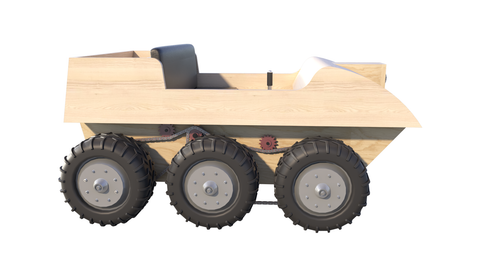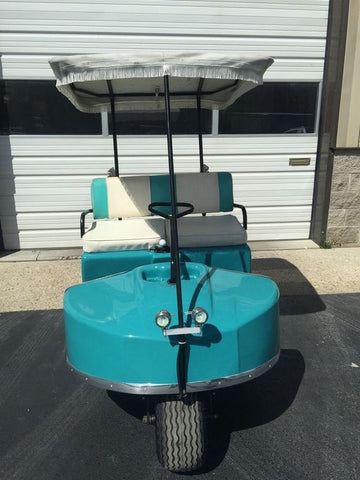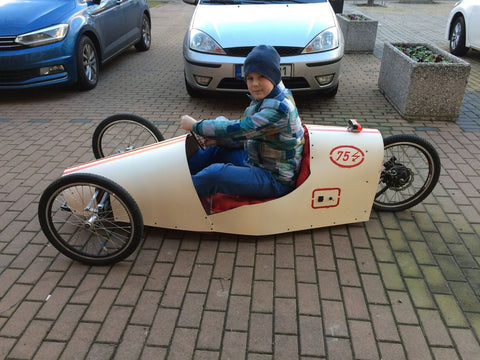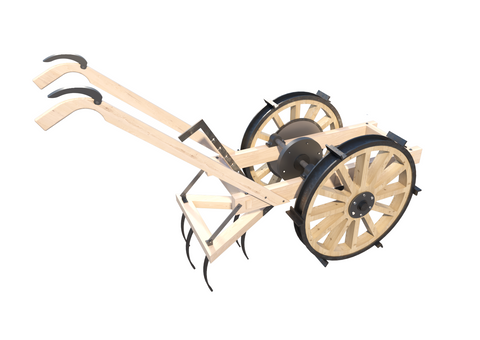Build Your Own Boat Trailer Plans DIY Canoe Transport Carrier RV Camper Part 15'
These free Boat Trailer Plans will show you how to build this 15' boat trailer. This 15' boat trailer is a strong but lightweight trailer suitable for most boats between 13ft (3.95 metres) to 15ft (4.7 metres) long with a vee hull. With fully adjustable rear quad wobble rollers, an intermediate set of adjustable dual wobble rollers and keel rollers, this trailer will suit most alloy and fiberglass hulled boats.
Distance between the guards is 6.07' and overall length from the coupling to the rear quad rollers is just over 16'the plans include details of the winch post shown in the pictures above, and also two fully adjustable winch posts to adapt to different bow and winch eyelet setups.
The trailer is suitable for boats up to 1350 lbs although if the tire and spring specifications are up rated, boats up to a maximum of 1750 lbs can be towed.
Disc Brakes can be fitted if required but wider guards will need to be fitted to compensate for the additional room the braking hardware will take up.
Details are included for fabricating your own wobble roller arms and supports that will potentially save you hundreds of dollars. "Off the shelf" roller setups can be fitted in place if you are reluctant to build your own.
What is a Boat Trailer?
There are a number of options for a boat trailer, but this article will focus on the types of single-axle and roller trailers. Before purchasing a boat trailer, make sure to understand the different types. This article will provide information about keel rollers, single-axle trailers, and submersible trailers. It will also explain the different types of accessories available for these trailers.
Roller trailers
If you want to transport your boat, you can use a roller trailer. The keel rollers come with nylon ends and fit a three-inch tongue width. These brackets attach to your boat and support the keel. They come with two three-eighths-inch bolts and are made in the United States. They are easy to use and will keep your boat in place while on the trailer.
Submersible trailers
There are two main types of submersible boat trailers: the bunk and roller. The bunk trailers require less water to be submerged while the roller type doesn't. Roller trailers can also be used in shallower ramps. The driver backs the boat into the water with the rear of the boat floating while aligning the trailer and boat. This type is suitable for smaller boats and shallower water ramps. While bunk trailers need less water to be submerged, they are still more prone to damage.
Keel rollers
There are several types of keel rollers that come with a boat trailer. The self-centering keel rollers use grooves to center the hull of the boat during transportation. These rollers can be especially helpful when traveling alone in strong winds. Bow rollers are also available for a boat trailer, which grip the vessel during transportation. They need to be sturdy and resilient because they support nearly 40% of the boat's mass. Additionally, the more rollers there are, the less likely the vessel is to be damaged during transport.
Single-axle trailers
The two basic types of boat trailers are tandem axle and single-axle. The primary difference between the two types is size, with tandem trailers being significantly larger and easier to maneuver. Typically, single-axle trailers have only two wheels, while tandem trailers have three. Single-axle trailers are smaller, making them the preferred choice for those who own small boats and don't need to haul large loads.
Frame and wiring of a boat trailer
If the wiring of your boat trailer is corroded, it may be time to replace it. Fortunately, replacing the wiring of your boat trailer is not too difficult. This task usually takes four to five hours and requires very little skill. You can also do the work yourself if you are confident in your abilities. However, you should take note of the safety procedures when replacing the wiring of your trailer. Make sure that you follow these instructions to avoid a costly accident.
Legal requirements for a boat trailer
A boat trailer must meet certain legal requirements, such as having brakes on all axles. In addition, a trailer must have working lights. The bulbs must be waterproof and allow cooling before submerging in water. Lights are another requirement, which varies by state, but it is a good idea to have them working before you travel. A good way to comply with the law is to have a boat trailer inspection before you hit the road.
All DIY plans are designed by Ben Stone. Ben is a retired Engineer in Canada. Ben also drafts these himself using the latest AutoCAD software to ensure accuracy. He studied Engineering back in the early 1980's. After over 30 years in the Construction industry he developed a passion for building cool items around his farm and cabin. These are great DIY projects. With a little skill anybody can Do It Yourself. Ben is always a email away if you have any questions while building one of his projects. He is adding new plans all the time.











